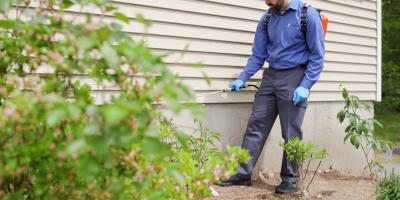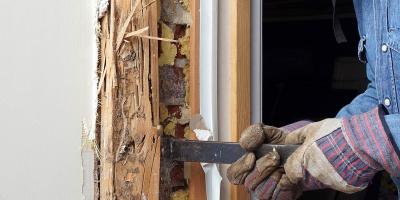It’s a Seller’s Market: Don’t Let Hidden Pests Delay the Closing

The market for home sellers is hot right now and conditions are ripe for a quick and profitable home sale. One of the most important steps you can take when listing your home for sale in terms of speeding up the process is to make sure everything is all clear when it comes to pests.
It’s important to note that, by law, any pest activity that you, as the seller, are aware of must be disclosed to any potential buyers. That said, it’s better to find and be able to treat any pest problems before you put your house up on the market than to be caught off guard. A home inspection that reveals a previously unknown infestation could jeopardize your sale at the last minute.
Beyond looking for some of the more obvious signs of infestation, like rodent droppings, unusual (typically foul-smelling) odors, urine stains and, of course, actual pests, here are some other areas where you should carefully inspect your home to make sure it’s free of pests:
Be on the Lookout for …
Wood damage: A cornerstone in the home inspection process, a wood-destroying insect inspection is specifically required by the VA before approving this type of loan. Pest-related wood damage in New England can be caused by termites, carpenter ants, powderpost beetles or carpenter bees, each of which leaves its own distinct calling card.
Termites cause honeycomb-patterned damage along the grain of the wood. If you poke wood with a screwdriver and the tip penetrates the wood, or if tapping wood reveals a hollow sound, you might have a termite problem – especially if there’s a gray-brown gritty film on the affected wood and/or narrow tubes in the wood.
Carpenter ant damage can look similar to termite damage to the untrained eye, so the biggest telltale distinction is the presence of sawdust near the burrow site. Since termites eat wood, they should leave no remnants, while carpenter ants merely excavate the wood and leave plenty of “frass” debris in the areas that they’ve dug.
Powderpost beetles leave wood remnants in their wake, but it looks more like powder than it does frass. Also like carpenter ants, these beetles leave holes in the infested wood, but much smaller, cleaner ones than the ants leave. These are actually exit holes, since they have no further need to enter the wood after the beetles have completed their development. Then once mating begins, the females will lay their eggs below the unfinished wood surface, to complete the cycle.
Carpenter bees also don’t actually eat your wood, but the damage they do by tunneling through it to create nesting chambers can be just as bad, if not worse. Signs of carpenter bee damage includes sawdust piles and excrement stains on the wood below their bore holes, which are perfectly round and about the size of a dime.
Each day that these pests are left untreated literally eats away at your home’s value, which is why it’s so critical to find and treat for them early in the selling process.
Insulation damage: The last thing you want a home inspector to see when they look in the attic is any indication that the space was occupied by furry or flying tenants (especially if they’ve yet to be evicted). Animals tearing and moving insulation materials to create nests are typically the culprits behind insulation damage, which can lead to increased heating and cooling costs and a plethora of other structural issues.
You’ll want to look for shredded and/or rearranged insulation, malodor and excrement. If you have a history of wildlife in your attic, you’ll need to provide proof of exclusion and any included warranty provided by the pest control company that did the work.
If you discover an active infestation, obviously you’ll need to take care of it before selling your home. But don’t neglect inspecting your attic – sometimes bat colonies and other animal fugitives can be present without the homeowner ever realizing it.
Excess vegetation: Not just a sign of sloppy upkeep, extra vegetation growing around your home can be an ideal shelter for ticks, rodents and sometimes even snakes. This one’s simple to address – just cut back the vegetation to reduce or eliminate the harborage space.
Hopefully after you inspect these areas you find they’re all free of pests. But if not, the good news is you know who to call to get it quickly and effectively controlled for you.
Make sure that there are no surprises at closing… Call in the professionals before your house hits the market.



